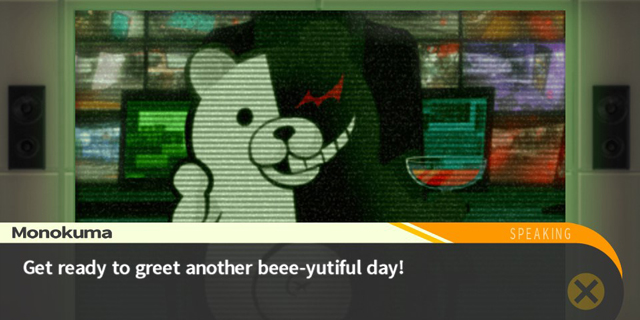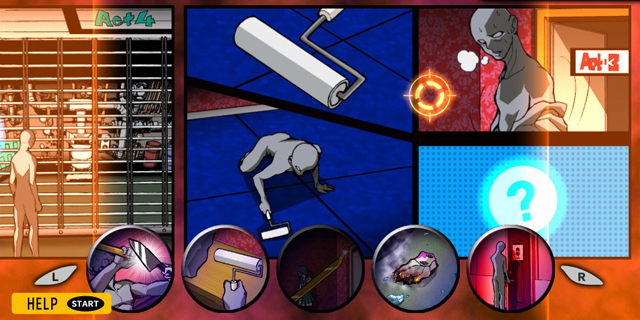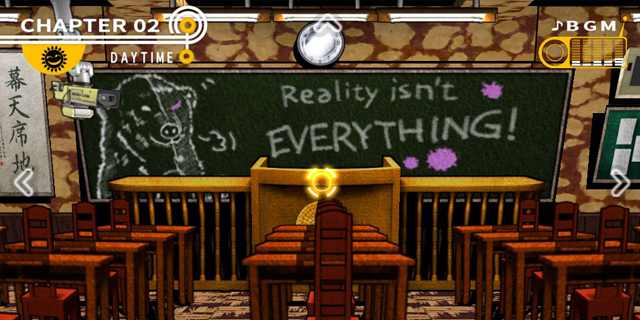
If you’ve played a game in the Ace Attorney series, imagine if it had something like Final Fantasy IV’s Active Time Battle system and you start to approach the weirdness that is Danganronpa: Trigger Happy Havoc. FFIV was considered a game-changer for JRPGs, and similarly, Danganronpa introduces some game-changing elements for the mystery visual novel.
Danganronpa, originally a 2010 PSP game by Spike Chunsoft (the same folks behind the Zero Escape series), was released in an upscaled form for the Vita late last year, but hadn’t made it outside of Japan in any form. NIS America, known for its obscure Japanese niche releases, has now picked it up for Western audiences. Everything takes place at Hope’s Peak Academy, a school that only accepts students who are considered the “Ultimate” in their particular fields. The protagonist, Makoto Naegi, is no such Ultimate. He considers himself to be an average person with no outstanding abilities, and just so happened to get into the school by a lottery that chooses a random high school student to attend. When he arrives, he faints, and awakens to find that he and his fellow classmates are imprisoned by a sadistic remote-controlled bear named Monokuma. The only way to leave, says Monokuma? Murder one another.

The game is split into three main segments: Daily Life, Deadly Life and Class Trial. In Daily Life, you take control of Makoto and basically explore the school at your discretion. Most of the Daily Life segments are heavily scripted, requiring you to meet up with a certain character to move the plot forward, but there are also Free Time segments that can be used to improve relationships with other characters. Doing this, you can potentially earn skills that can be used to make the Class Trial segments easier. Deadly Life occurs when a murder has taken place. This turns the game into a straightforward investigation segment, in which you gather evidence in the form of Truth Bullets, “ammunition” you could use to contradict arguments in the Class Trial phase.
The Class Trials are the meat and potatoes of the game, and where most of the action takes place. In the Nonstop Debate, the statements for each topic will start to blow up piece by piece on-screen. Using your Truth Bullets, you shoot out a part of certain statements that contradict your evidence. This is done by literally placing the on-screen crosshair on the statement and shooting at it to break the statement. As the game progresses, more weak points start to appear and leave you to think about choosing a statement more carefully.
Hangman’s Gambit is a straightforward segment that requires you to shoot out letters to reveal a clue to the trial. Bullet Time Battle is a rhythm minigame that allows you to go one-on-one against another student to break statements and reveal the truth. The Closing Argument is the final challenge that requires you to piece together the series of events for the trial, comic-book style. All of these come together to make a nice action-oriented feel, something that visual novels have long lacked.

Visually, the game is extremely well-done, from character animations and environments to cutscenes in which the animation style changes almost completely. The blend of it all makes the game a visual spectacle on its own. At times, the game is so whimsically animated that it can make you forget about all the grisly murders. The music takes a lot of cues from the Ace Attorney series, really setting the mood for whatever’s happening at the moment and changing on a whim when conversations take a turn.
With great visuals and music complementing engaging characters and plot, Danganronpa: Trigger Happy Havoc is an experience worth having. Visual novels have started to gain a foothold in the West, and Danganronpa does a great job of showing why they deserve to be noticed.
Pros: Excellent aesthetics, engaging story and characters
Cons: Extremely linear plot progression, odd touch mechanics



















